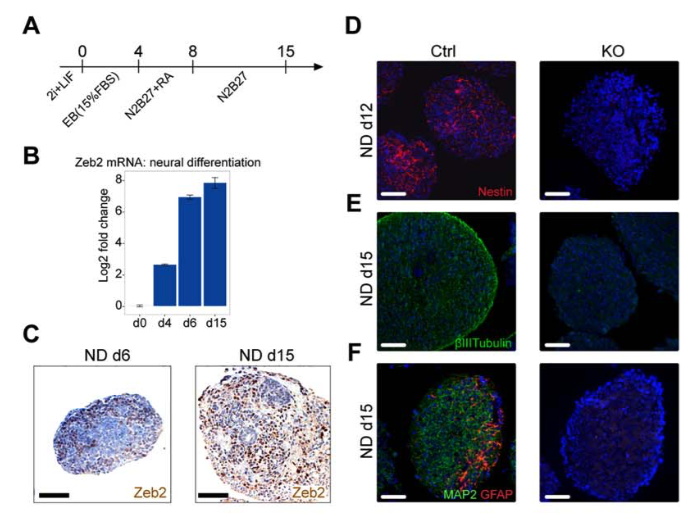Zeb2 Regulates Cell Fate at the Exit from Epiblast State in Mouse Embryonic Stem Cells.
Abstract
In human embryonic stem cells (ESCs) the transcription factor Zeb2 regulates neuroectoderm versus mesendoderm formation, but it is unclear how Zeb2 affects the global transcriptional regulatory network in these cell-fate decisions. We generated Zeb2 knockout (KO) mouse ESCs, subjected them as embryoid bodies (EBs) to neural and general differentiation and carried out temporal RNA-sequencing (RNA-seq) and reduced representation bisulfite sequencing (RRBS) analysis in neural differentiation. This shows that Zeb2 acts preferentially as a transcriptional repressor associated with developmental progression and that Zeb2 KO ESCs can exit from their naïve state. However, most cells in these EBs stall in an early epiblast-like state and are impaired in both neural and mesendodermal differentiation. Genes involved in pluripotency, epithelial-to-mesenchymal transition (EMT), and DNA-(de)methylation, including Tet1, are deregulated in the absence of Zeb2. The observed elevated Tet1 levels in the mutant cells and the knowledge of previously mapped Tet1-binding sites correlate with loss-of-methylation in neural-stimulating conditions, however, after the cells initially acquired the correct DNA-methyl marks. Interestingly, cells from such Zeb2 KO EBs maintain the ability to re-adapt to 2i + LIF conditions even after prolonged differentiation, while knockdown of Tet1 partially rescues their impaired differentiation. Hence, in addition to its role in EMT, Zeb2 is critical in ESCs for exit from the epiblast state, and links the pluripotency network and DNA-methylation with irreversible commitment to differentiation.
Contribution: Analysis of RNAseq, RRBS and HT-qPCR data. Writing and editing of manuscript.
